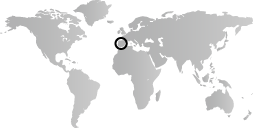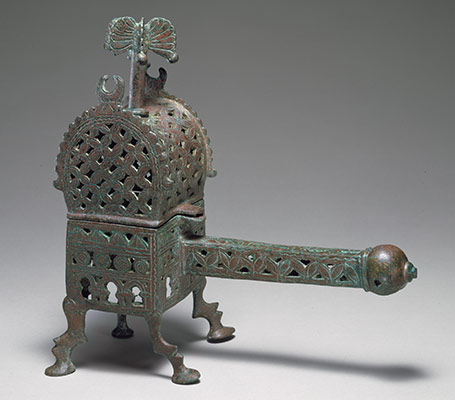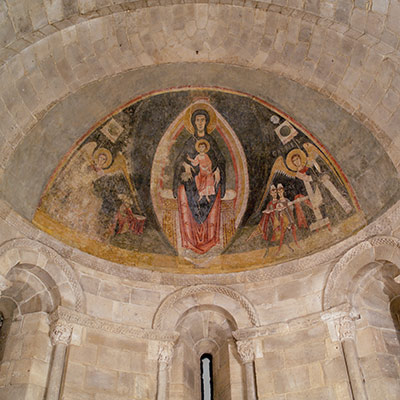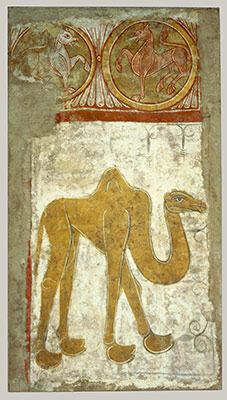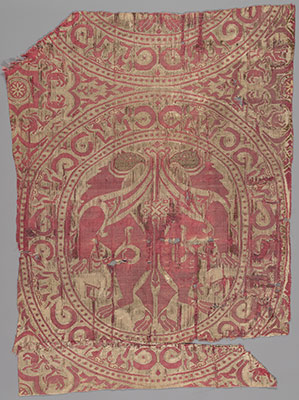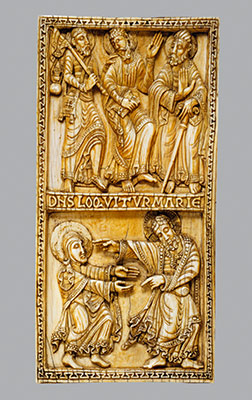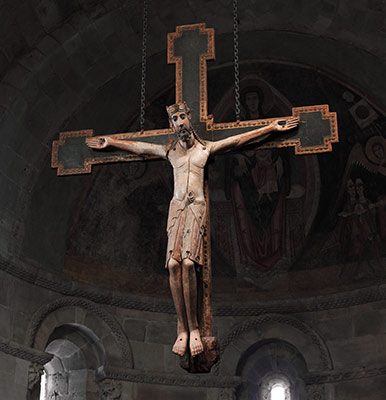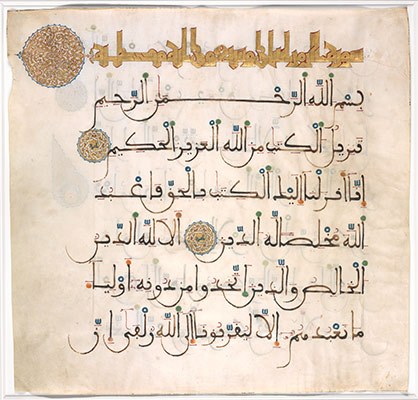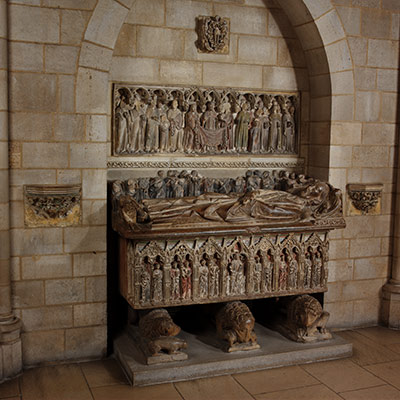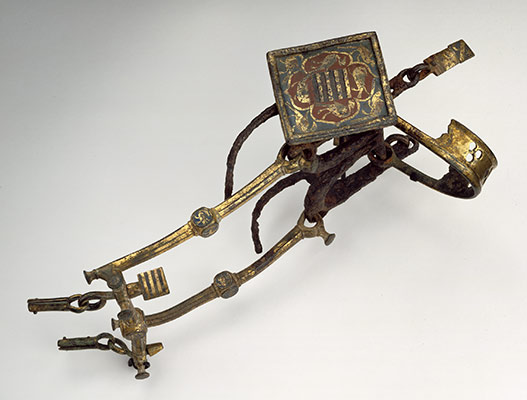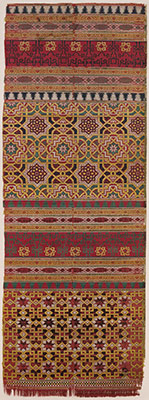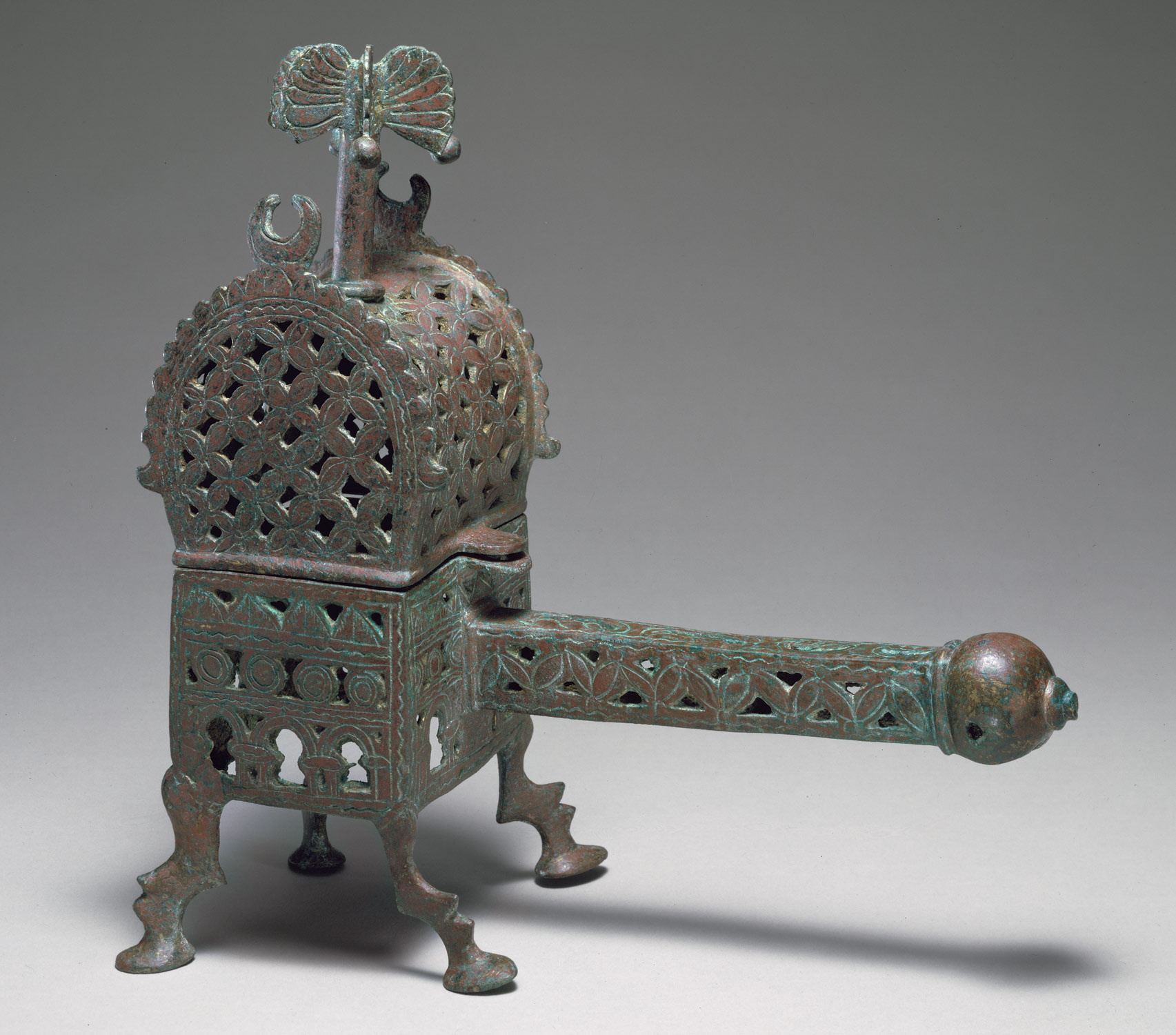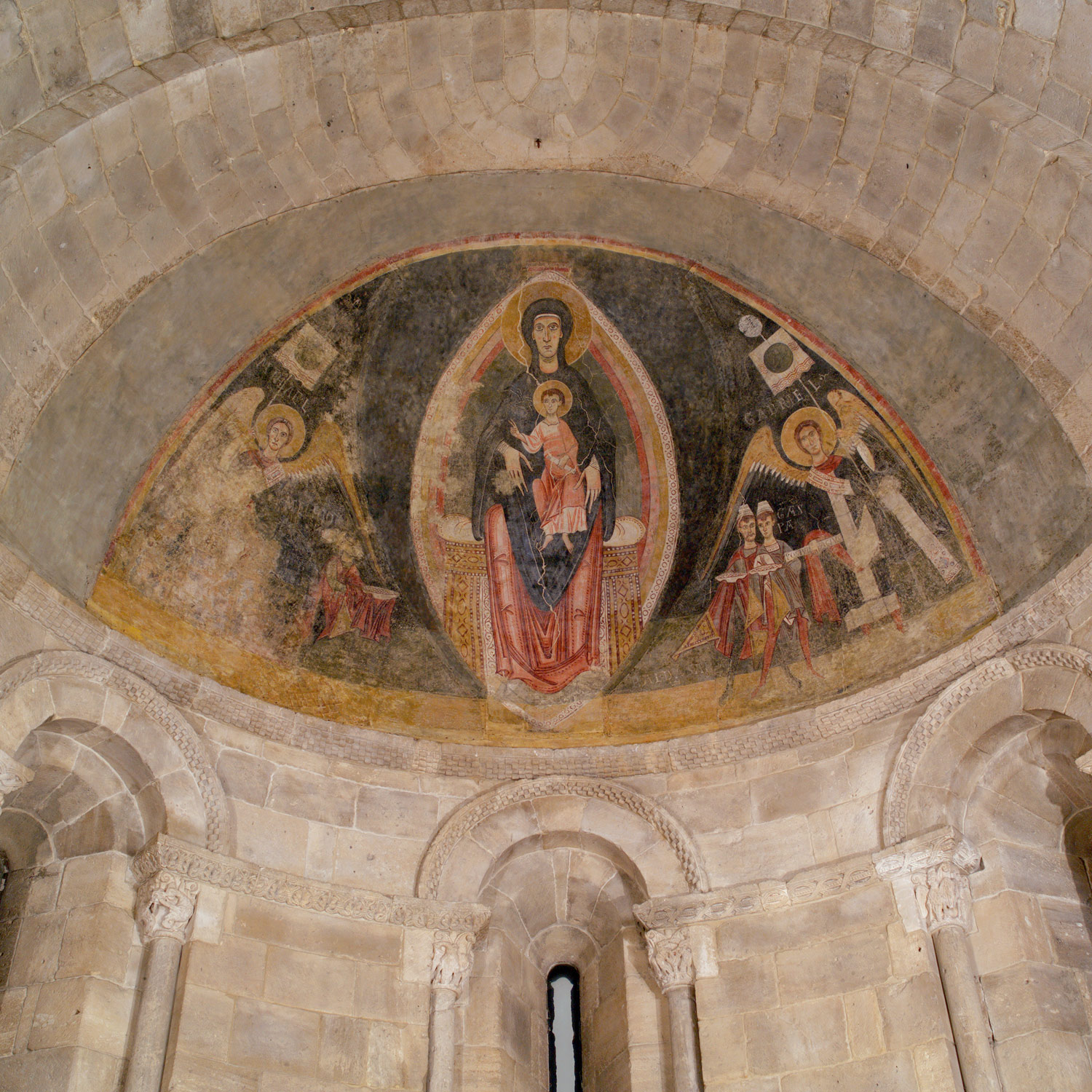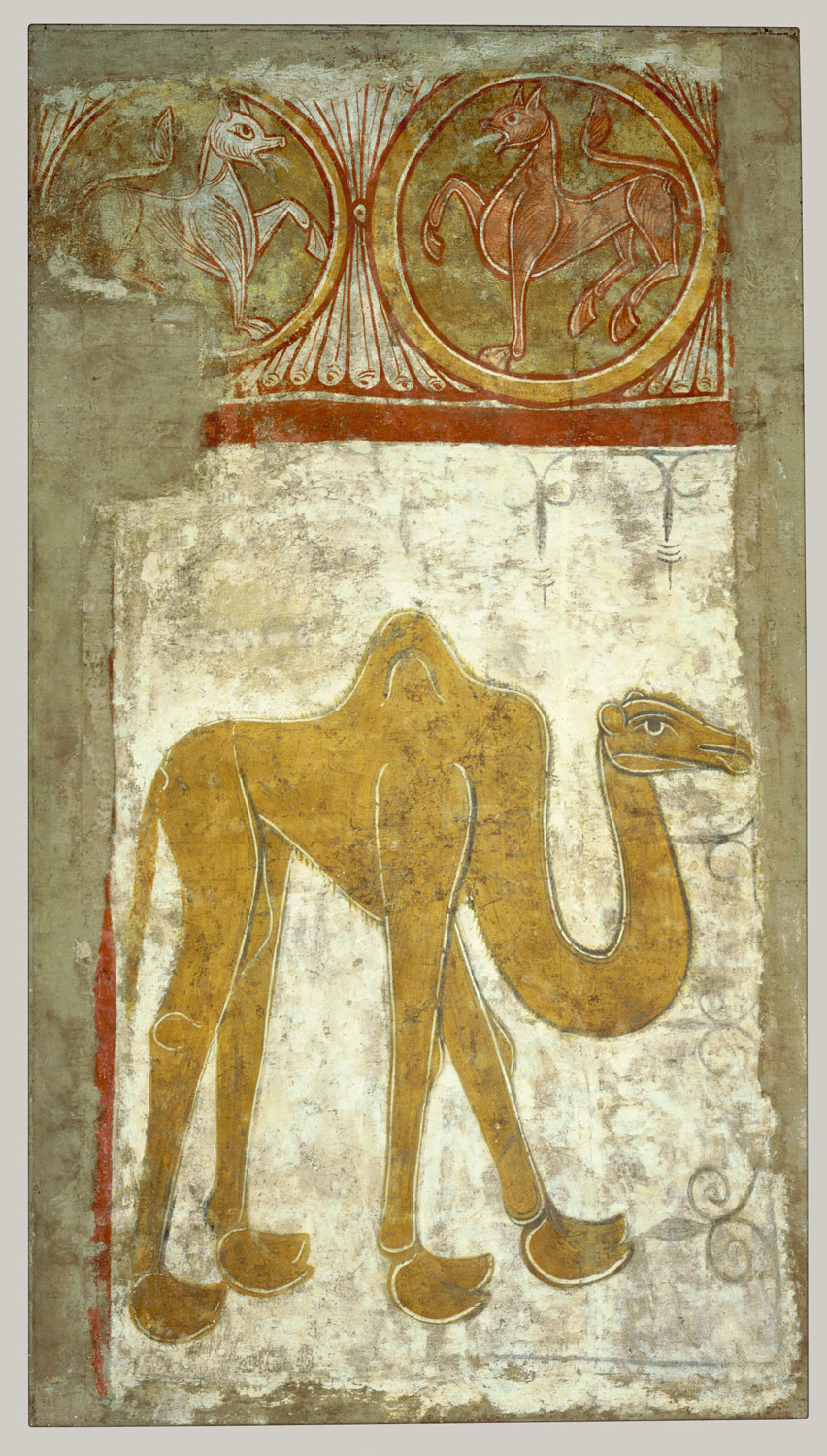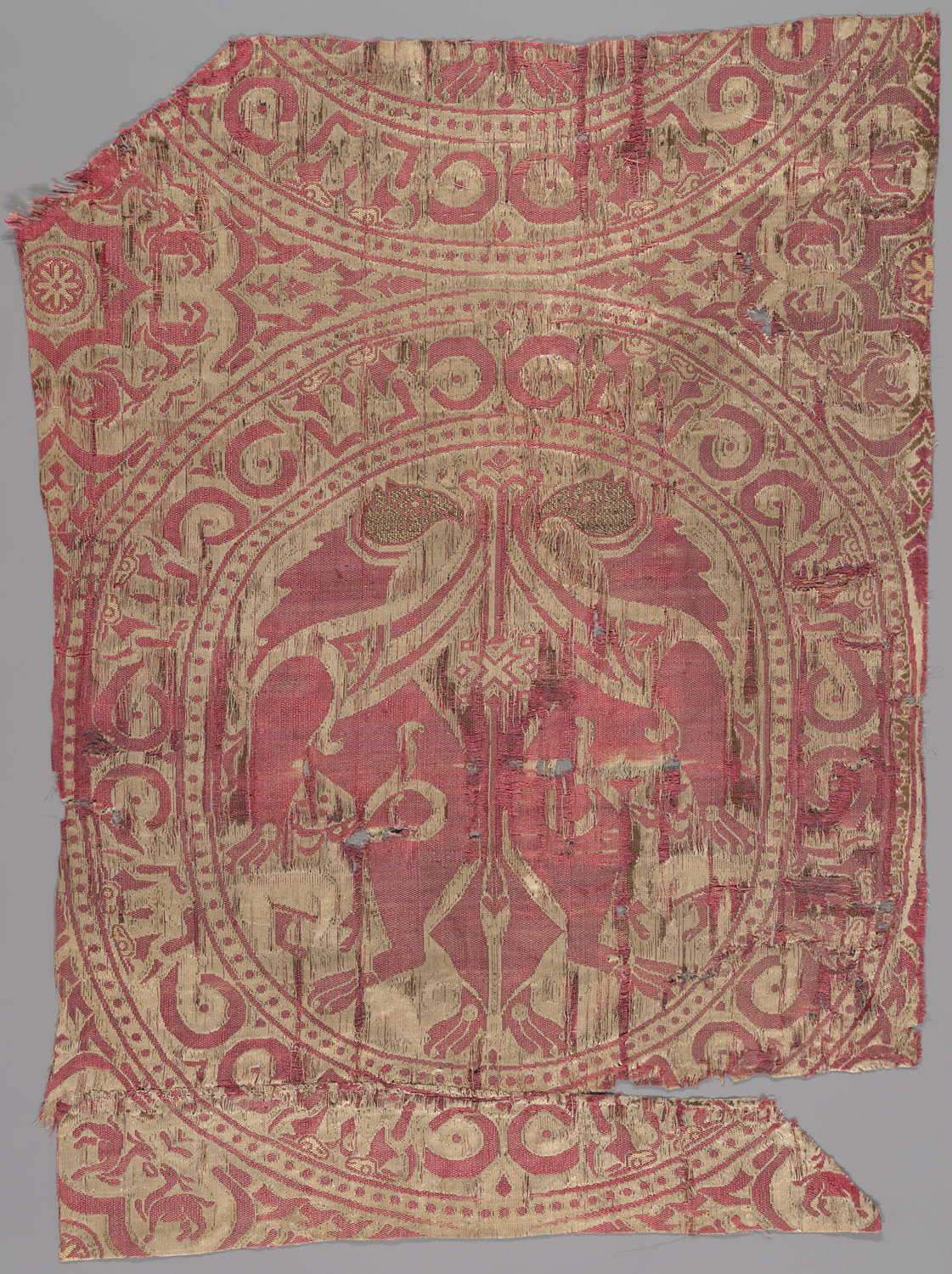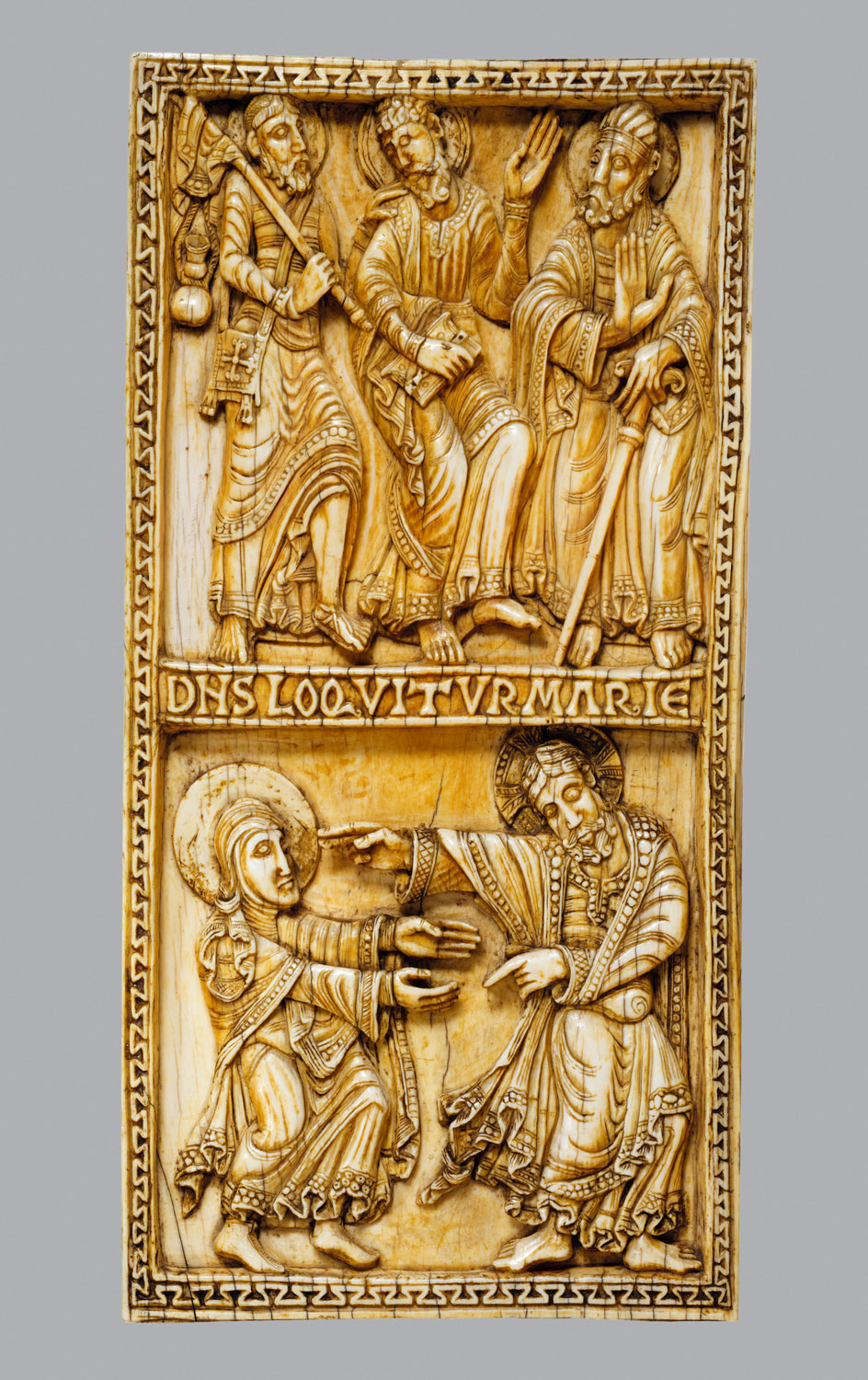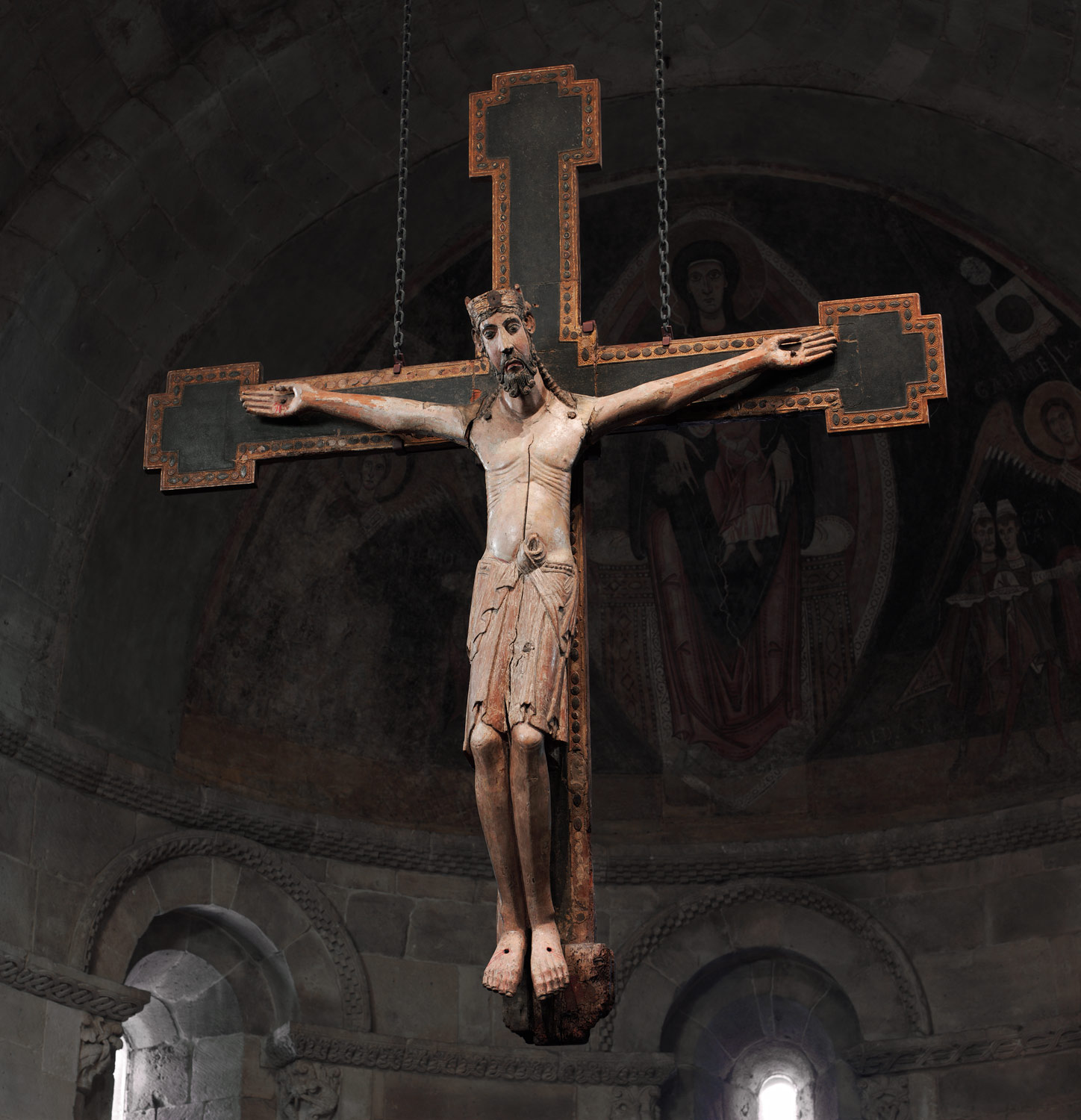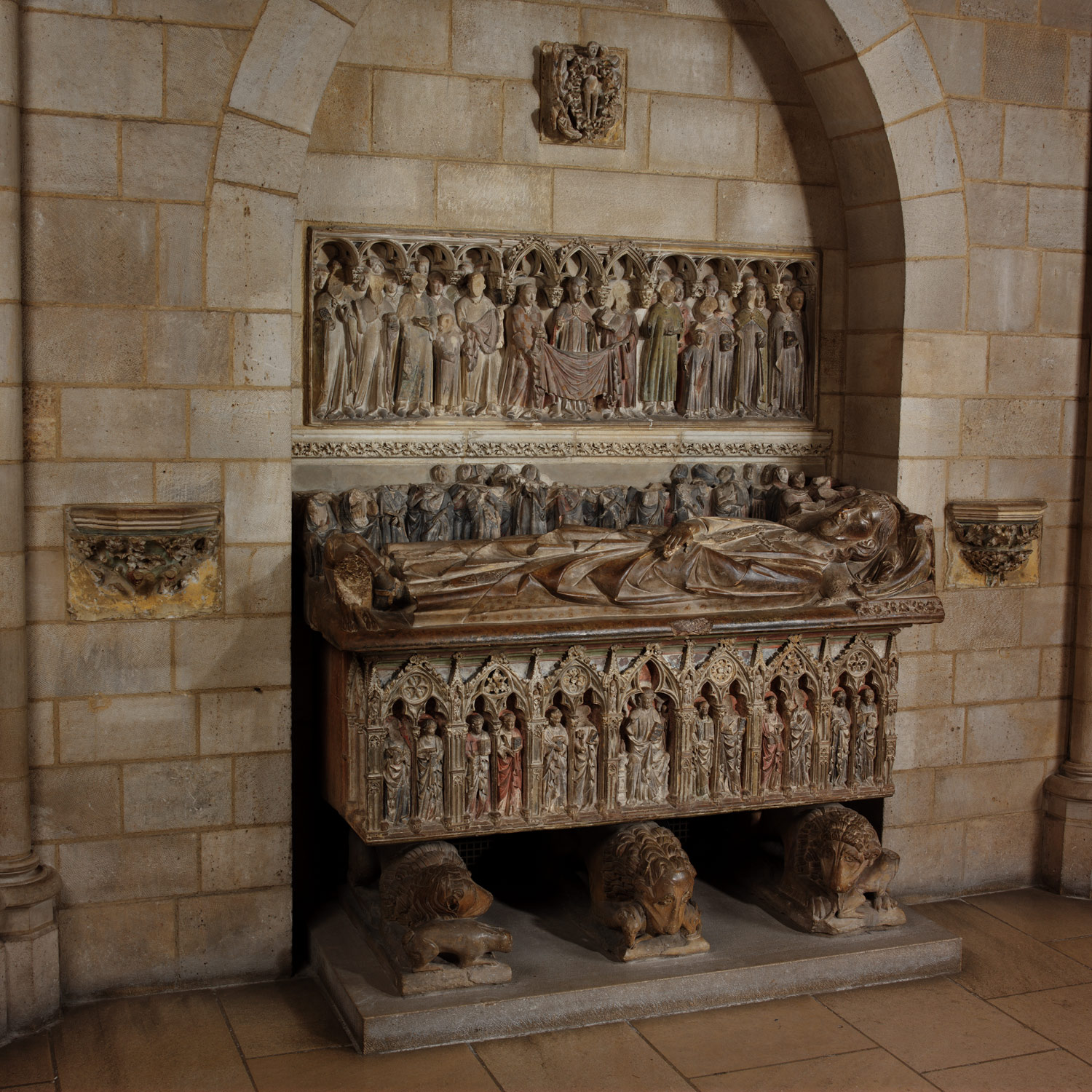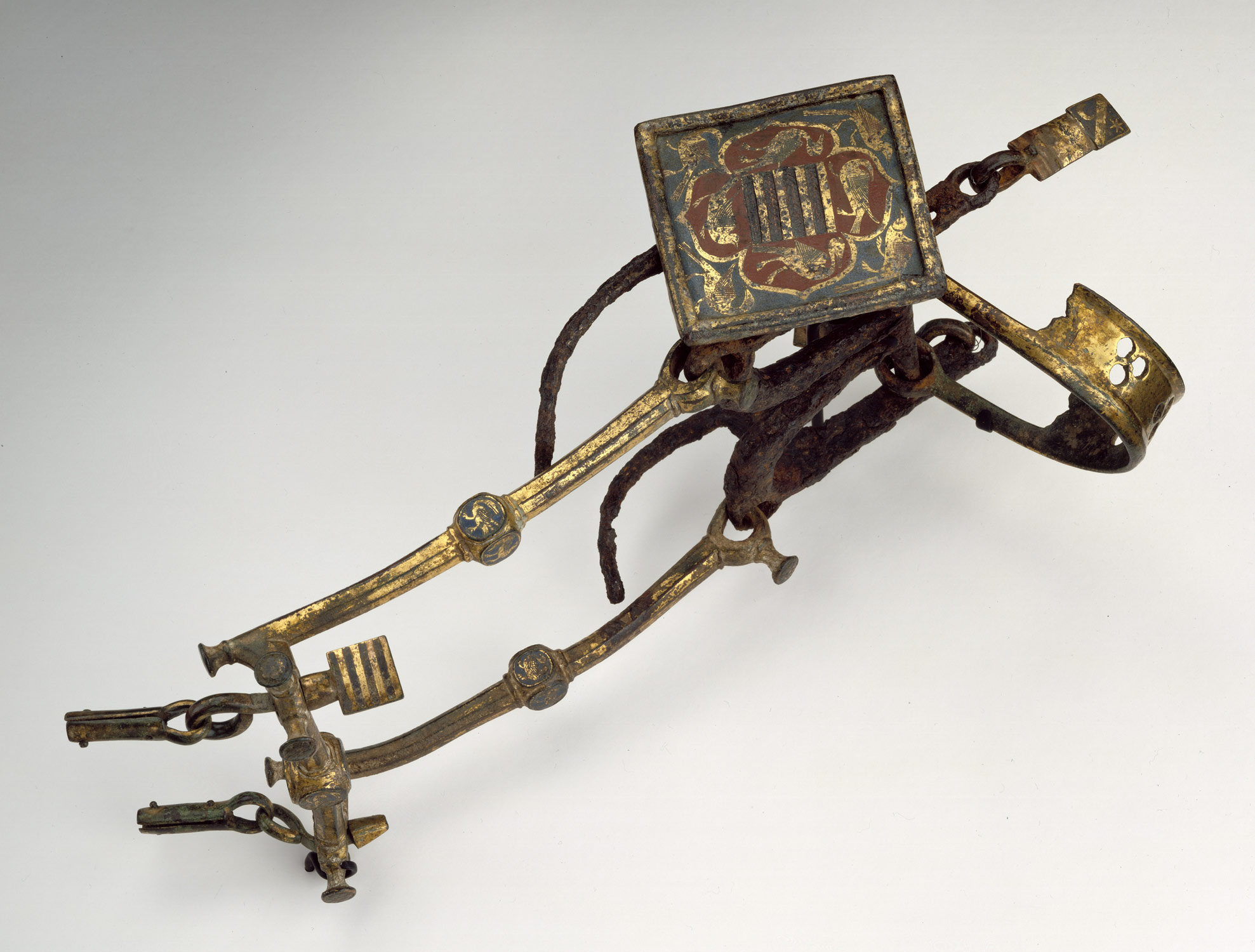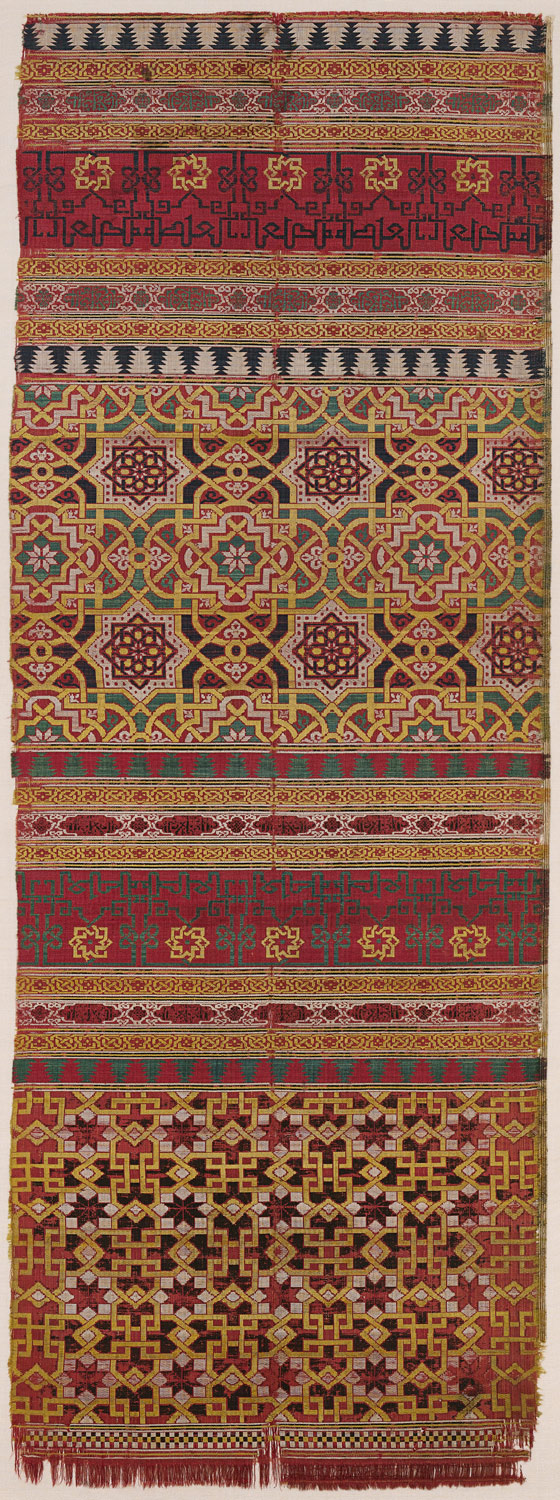At the beginning of the period 1000 to 1400, the Umayyad caliphate collapses, fragmenting Islamic power in the Iberian Peninsula. Christian kingdoms in the north gradually unite, become much more powerful, and expand their territories through a campaign of reconquista (reconquest). Despite the weakening of Islamic power, its influence in science, medicine, and art is extraordinary and contributes to the rich diversity of the peninsula as Christians, Muslims, and Jews live peacefully together. By the end of the period, the Christian kings conquer virtually all of Muslim al-Andalus, leaving Granada and the surrounding territory as the last bastion of Islamic Iberia.
Iberian Peninsula, 1000–1400 A.D.
Timeline
1000 A.D.
1100 A.D.
NORTHERN KINGDOMS
ANDALUSIA
1100 A.D.
1200 A.D.
NORTHERN KINGDOMS
ANDALUSIA
1200 A.D.
1300 A.D.
NORTHERN KINGDOMS
ANDALUSIA
1300 A.D.
1400 A.D.
NORTHERN KINGDOMS
ANDALUSIA
Overview
Key Events
-
ca. 900–1100
The tolerance for non-Muslims under the Umayyad caliphate and Ta’ifa kings creates ideal conditions for harmonious coexistence among Christians, Jews, and Muslims. The tenth and eleventh centuries are especially significant for Spanish Jewish history and are often regarded as a golden age of literature, philosophy, and science.
-
929–1031
Under the Umayyad caliphate, eastern Mediterranean cultural impulses influenced by the Syrian Umayyads, ‘Abbasids, and Fatimids coexist with a strong indigenous artistic component.
-
1000
There are three major Christian kingdoms in the eleventh century: Navarre, Aragon, and León-Castile. While these kingdoms are relatively small and often in conflict with each other, they do form alliances in order to wage war against the Muslims, who at this time control almost all of the Iberian Peninsula. This campaign is called the reconquista. Sancho el Mayor of Navarre begins the construction of the pilgrimage road to Santiago with bridges, monasteries, and hostels for travelers, which will bring wealth to northern Spain.
-
1031–1086
Following the collapse of the Umayyad caliphate, local governors designate themselves as autonomous Ta’ifa rulers (Muluk al-Tawa’if)—also known as party kings—in various provinces of al-Andalus, establishing courts that attempt to equal the splendor of Córdoba. These leaders lack significant power because of internecine feuding; the strongest among them are Sevilla’s ‘Abbasid rulers, Toledo’s Dhu’l-Nun family, Saragossa’s Banu Hud rulers, and Granada’s Zirids. The Ta’ifa kings, continuing the practice of princely patronage, build monumental palaces. The number of centers of literature, music, and opulent art increases and important workshops flourish in diverse areas of the peninsula.
-
1075
Construction begins on the Cathedral of Santiago de Compostela on the site of the tomb of James the Great, apostle and saint. After Jerusalem and Rome, Santiago de Compostela becomes the third most important pilgrimage goal for faithful from all over Europe. People of all conditions—kings and queens, knights and noblewomen, serfs and common folk—travel to the north of Spain, greatly improving the economy of the region. The religious enthusiasm generated by the pilgrimage ensures the continuing success of the Christian monarchs. The figure of Saint James, said to have brought Christian faith to the Iberian Peninsula, takes on a political dimension as patron of the reconquista.
-
1076
The canonization of Abbot Dominic (r. 1041–73) of the Benedictine abbey of Silos, near Burgos, marks the beginning of a period of prosperity. Under Abbot Juan (r. 1118–42), the abbey receives gifts from King Alfonso VII (r. 1126–57) as well as papal protection, and work begins on the construction of its cloister. With eight large reliefs and 128 carved capitals over two stories, the Silos cloister contains one of the most ambitious sculptural programs in Spain. The six reliefs with scenes of the Passion and of events following Christ’s Resurrection, carved in a first campaign around 1130, are distinguished by the elegance of their multifigured compositions, the clarity of their narratives, and the precision of their execution, reminiscent of ivory carving. The closest stylistic parallels are found in sculpture in Toulouse, revealing the mobility of artists along the pilgrimage roads leading to Santiago de Compostela. The reliefs with the Annunciation and the Tree of Jesse date from a second campaign, probably around 1160 to 1180. Instead of the shallow, linear treatment of the previous reliefs, the sculptor of these scenes favors a strongly three-dimensional approach, with voluminous draperies and deep undercutting. In view of the close ties with Burgundy maintained by the kingdom of Castile-León, it is not surprising that the Annunciation and the Tree of Jesse reveal the influence of Burgundian sculpture.
-
1085
Alfonso VI, king of Castile, conquers Toledo, creating a large Christian realm in the very center of Spain. The success of the Christians is mostly due to the fragmentation of the Islamic Ta’ifas. Rodrigo Díaz de Vivar (El Cid), whose life inspires epic literature, rules Valencia from 1094 to 1099, at times living in peaceful harmony with his Muslim neighbors.
-
1085–1145
The Almoravids, a newly emerged Islamic power in North Africa, enter al-Andalus after the fall of Toledo in 1085 in response to the Ta’ifa leaders’ plea for help in repelling the Christian armies of northern Spain. The Almoravids assume control of al-Andalus in 1090, while maintaining their primary seat of government in Marrakesh (Morocco). Although they begin by sponsoring austere programs of architectural decoration, their later monuments and textile manufactory in Almería indicate that the Almoravids eventually embrace the luxury culture of al-Andalus.
-
1090s
Count Raymond II of Burgundy (r. 1087–1107), son-in-law of King Alfonso VI of León, repopulates the once-Roman town of Ávila situated between Christian and Muslim territories. Construction begins on the city walls and continues after the Muslim raid of 1109. Twelve meters high, 3 meters thick, and 2.5 kilometers long, the Ávila walls are the best preserved from medieval Europe.
-
1100–1200
Despite the strict Islamic rule of the Almoravids and Almohads, who adhere to the conservative Malikiyya school of Sunni Islam, this period is a high point in the intellectual, philosophical, and scientific life of the Iberian Peninsula. Key figures include Ibn Rushd (known in Christian Europe as Averroës, 1126–1198), one of the greatest Islamic philosophers, and Moses Maimonides (1135–1204), possibly the greatest figure of medieval Judaism. The Latin translations of their works have a profound impact on the development of philosophy and science in Europe.
-
1143
The Portuguese nobility under the leadership of Afonso Henriques gains independence in a treaty formally ratified in 1179. The Portuguese rapidly push the Muslims back into Spain, aided by Crusaders who are on their way to the Holy Land. Portugal then becomes an important Atlantic sea power exporting tin and silver.
-
1145–1232
The Almohads, another Berber dynasty from the southern Maghrib, supplant the Almoravids and take Sevilla, Córdoba, Badajoz, and Almería. The Almohads make Sevilla their capital in al-Andalus, while retaining Marrakesh as their center of power in North Africa. The Great Mosque and the minaret called La Giralda, which they build in Sevilla, are paradigms of Almohad style.
-
1170s
Burgundian craftsmen complete the basilica of San Vincente in Ávila, vaulting the nave and building the west front. Along with the Pórtico de la Gloria at Santiago de Compostela, the west portal of San Vincente is the most important Spanish portal of the twelfth century. The story of Lazarus and the rich man occupies two lunettes above the doors; the archivolts are filled with a rich vocabulary of plant motifs; and the seated figure of Christ or San Vincente on the trumeau is flanked by ten apostles and prophets on the jambs. The latter are grouped in pairs, turned to each other as if in conversation. This unprecedented dynamism is also found in the Annunciation on the south portal.
-
1200–1400
Despite periods of intolerance, Iberian Jews continue their patronage of art and architecture. Surviving monuments include the Synagogue of Córdoba (1314–15) as well as the synagogues of Santa María la Blanca (thirteenth century) and El Tránsito in Toledo (1357).
-
1212
The combined armies of Aragon and Castile defeat the Almohads at the Battle of Las Navas de Tolosa, a turning point in the peninsula’s history. Al-Andalus fractures into tribute-paying principalities, vulnerable to invasion by the Christian kingdoms. These principalities, except for Nasrid-ruled Granada, soon lose their sovereignty.
-
1221
King Ferdinand III (r. 1217–52) attends the ground-breaking ceremony of the new cathedral at Burgos. Along with sister city León, Burgos is the most important site for Gothic art in Spain. Architects and sculptors for the cathedral program are recruited from France and the Rhineland by Bishop Maurice, a protégé of the king and a well-traveled man. The west facade reflects the design of Cologne Cathedral, while the sculpture of the south portal, known as the Puerta del Sarmental (ca. 1240–45), is thought to be by an artist who worked at Amiens Cathedral in the previous decade. Benefiting from royal patronage, construction proceeds steadily, and by 1260 the new building is consecrated.
-
1232–1492
The Nasrid dynasty rules Granada and neighboring Jaén, Almería, and Málaga in southern Spain. The early period of Nasrid rule is characterized by insistent pressure from Christian armies from the north, which successfully conquer Valencia, Játiva, and Jaén and make the Nasrids tribute-paying vassals in 1243. The Nasrids form tentative alliances with the Marinids of the Maghrib and keep uneasy peace with their Christian overlords. Nasrid arts grow from Almohad traditions but display more variety and richness than their precursors.
-
1300–1400
In the thirteenth and fourteenth century, urban populations increase in Iberia as people flock to the towns in search of new opportunities. Castile becomes famous for its wool, and gold florins start to be minted. Before this, silver coinage was standard except in Muslim al-Andalus, where gold coinage had been in use for a long time. Wool, iron, and wine are among the most important exports at this time.
-
1300–1400
During the fourteenth century, the Nasrid sultans commission and decorate splendid palaces, of which the Alhambra, the last major Islamic monument of Spain, is their greatest work. Built by a succession of Nasrid rulers, the Alhambra is conceived as a powerful image for a monarchy, a vast stage set for a diminishing power of the last Muslim rule on the peninsula.
-
1391
A wave of pogroms results in the massacre of many Jews in Sevilla and elsewhere in the peninsula. Large numbers of Jews are forced to convert to Christianity, while others flee, abandoning their important and vibrant communities in Spain.
Citation
“Iberian Peninsula, 1000–1400 A.D.” In Heilbrunn Timeline of Art History. New York: The Metropolitan Museum of Art, 2000–. http://www.metmuseum.org/toah/ht/?period=07®ion=eusi (October 2001)
Related
Map
